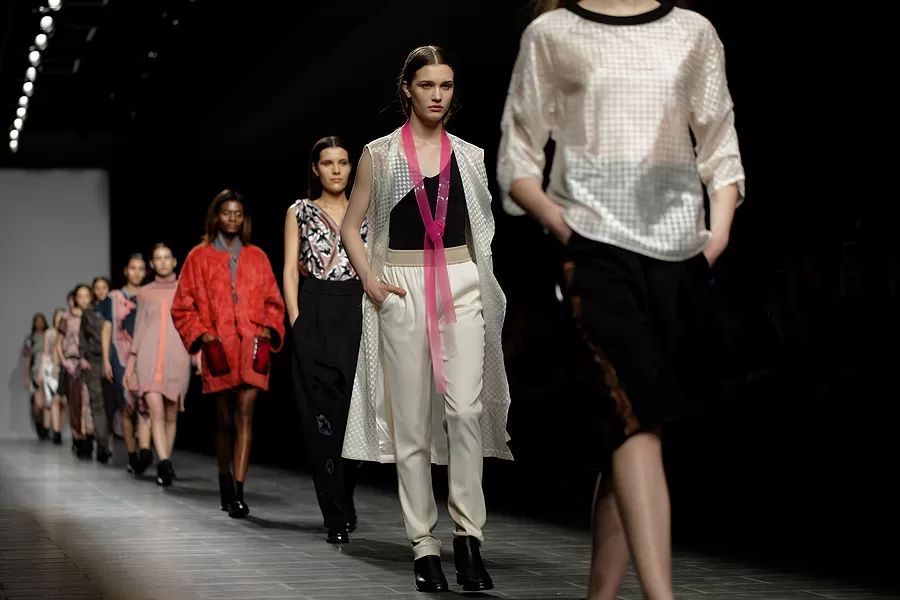The Man Who Invented The Designer Fashion World | Porterium

When scrolling through the many amazing categories and fashion houses of a marketplace that
specialises in finding the best luxury designer clothes online, names, styles and trends matter.
An evocative logo and an iconic marque label sewn into a garment are a massive part of the
appeal of designer fashion, whether the clothes being worn are lavish and ostentatious, or
possess a quietly sophisticated stealth wealth style of their own.
Particularly in the modern fashion world, the name comes first, setting the trends that the
fashion-conscious and other designers alike follow, as well as shifting and revolutionising
existing styles.
Whilst much of the fashion world is the result of many different pioneering designers doing their
best to stand out from the crowd in an increasingly fast-paced industry, much of the shape of
the designer fashion world as we know it can be credited to a single pioneering 19th-century
designer.
The French Fashion Revolution
The invention of haute couture can be credited to the French fashion designer Rose Bertin,
often credited with being the very first person to bring fashion to popular culture.
As the “Minister of Fashion” for Queen Marie Antoinette, she became the lead designer for her
clothes, and since Marie was a highly influential figure in the late 18th century prior to the
French Revolution, these styles were adopted by the French aristocratic class as well.
This made her the first trendsetting fashion designer and many of her more radical styles such
as the free-flowing “chemise à la Reine” as well as popularising the use of miniature fashion
dolls to demonstrate particular styles to an increasing base of customers outside of Paris itself.
However, whilst extending the base of fashion outside of royalty and the aristocracy, a lot of her
work was still custom-made and her primary role was a dressmaker as much as a trendsetter,
sadly dying in 1813 before witnessing the bloom of her creation.
Rise Of The House Of Worth
Fashion benefited from the Industrial Revolution in countless different ways, but one of the
biggest for the couturiers of Paris was the rise of international travel throughout Europe.
Steamships and railway networks allowed wealthy style-conscious individuals to travel greater
distances for the most fashionable looks, and the first place they would travel to was Paris,
owing to the reputation set by Rose Bertin and her contemporaries.
However, one person drawn to Paris was abjectly penniless but would change the very face of
designer fashion as we know it.
Born in Lincolnshire in 1825, Charles Frederick Worth was 21 when he arrived in Paris with five
pounds in his pocket and without being able to speak a word of French. However, within just six
years of his arrival, he was working for the prestigious silk and cashmere firm Gagelin-Opigez &
Cie.
Initially, he worked as a sales assistant but as part of his work in selling shawls and mantles, he
began to sew dresses as well. Whilst originally just part of the display, they eventually became
so popular amongst clients that he was allowed to open a dedicated dress department.
His designs appeared at The Great Exhibition and the Exposition Universelle, the first two
World’s Fairs that showcased his works and gave his employer an international boost.
The Paris Exposition in particular, with a signature white silk train with gold embroidery, was a
particular success for Gagelin, and soon Mr Worth was keen to break out onto the Paris fashion
scene for himself.
In 1858 he established Worth and Bobergh with the Swedish businessman Otto Gustaf
Bobergh, which became the prestigious House of Worth in due time.
The key to the breakout of the label was Empress Eugénie, who after approving of a ball dress
he had made became her favourite dressmaker and designer.
Her fashion choices, much like Marie Antoinette’s spread very widely and internationally, and
her elaborate dresses, evening wear and costumes for masquerade balls would become
popular fixtures of the court of the day.
With that endorsement, the House Of Worth started to fundamentally shift the fundamental way
in which high fashion was developed and designed, from a service provided to the rich and
famous to a central part of high society.
Whilst that was still a major part of his business, he also shifted where fashion designers
primarily place their attention. Instead of having one-off designs be the primary focus, the House
Of Worth developed a portfolio of example pieces and styles.
Buyers would go into his store, choose the colour and fabric from a particular style and would
have it tailor-made through a mix of standardised processes and bespoke touches.
This might sound familiar to more modern fashionistas, as a very similar approach is used to
this day, with fashion shows demonstrating a season’s looks that someone can choose from,
along with a few, special exclusive garments.
Part of the inspiration for this was the ready-to-wear industry that was also developing around
this time, which allowed for far more items to be made thanks to a more structured industrial
process.
Whilst that was not entirely the case at the House of Worth, he did propose more limited options
that would become the standard for fashion houses. Whilst people could choose the fabric and
the colour, they had a limited selection of styles.
These styles, as well, were unique, developing dresses that were more narrow than the
increasingly outrageous gowns worn at the time, as well as the walking skirt that allowed
women to travel around on foot without the impracticality of a long skirt.
He was also the first to develop a rudimentary fashion show. Instead of using the more common
convention of fashion mannequins, he would have live models showcasing the dress, with Marie
Vertnet Worth becoming arguably the first ever professional fashion model in history.
This has the unintentional effect of making the Worth name central to Parisian fashion, and
many clients bought entire wardrobes of clothes from him due to the impact of his name alone.
A comic from 1875 highlighted the effect Worth’s innovations had, and the label became
arguably the most important part of any designer garment from then until the present day.

